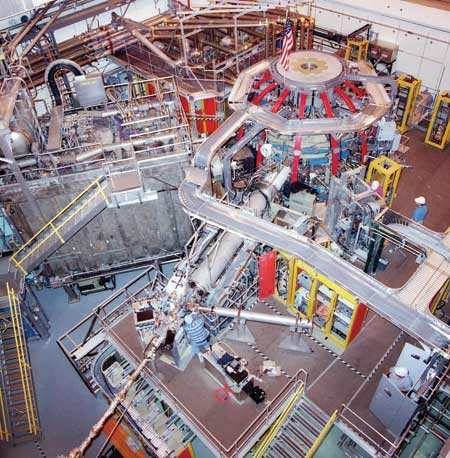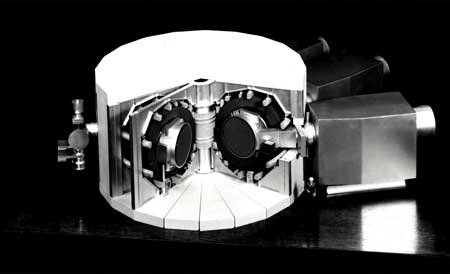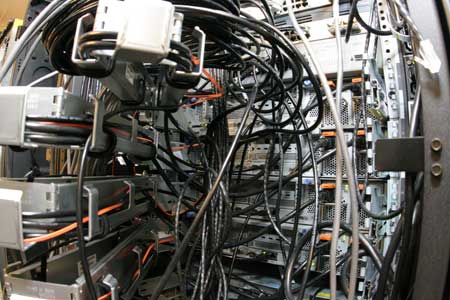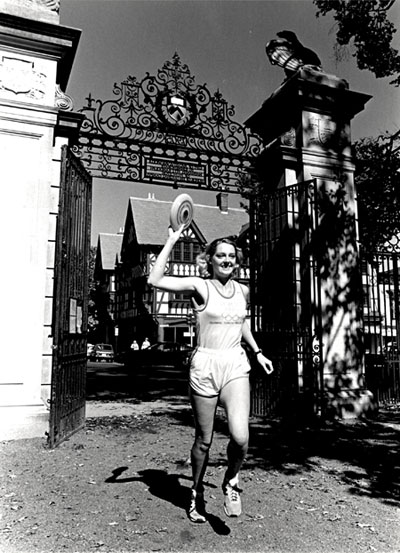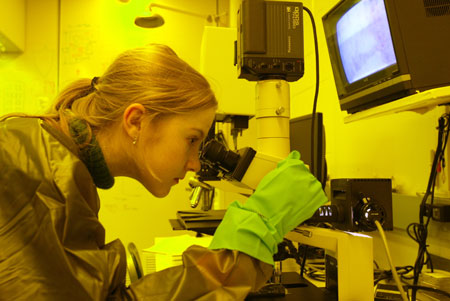
Drawing of a hypothetical fusion power plant.
The goal of the PPPL’s National Spherical Torus Experiment is to study the principles of spherically shaped plasmas, which could allow for the development of smaller, more economical fusion reactors. Fusion energy, the energy source of the Sun and the stars, can potentially be a safe and environmentally sustainable source of energy on earth.
Photo from the Princeton Alumni Weekly, courtesy of Princeton University Archives.
